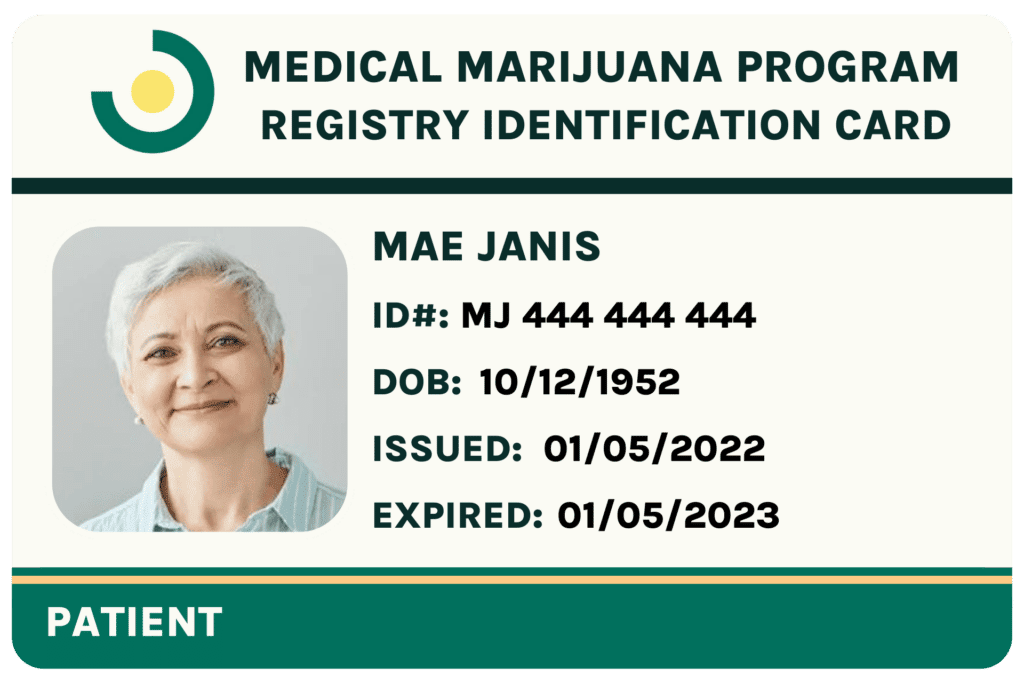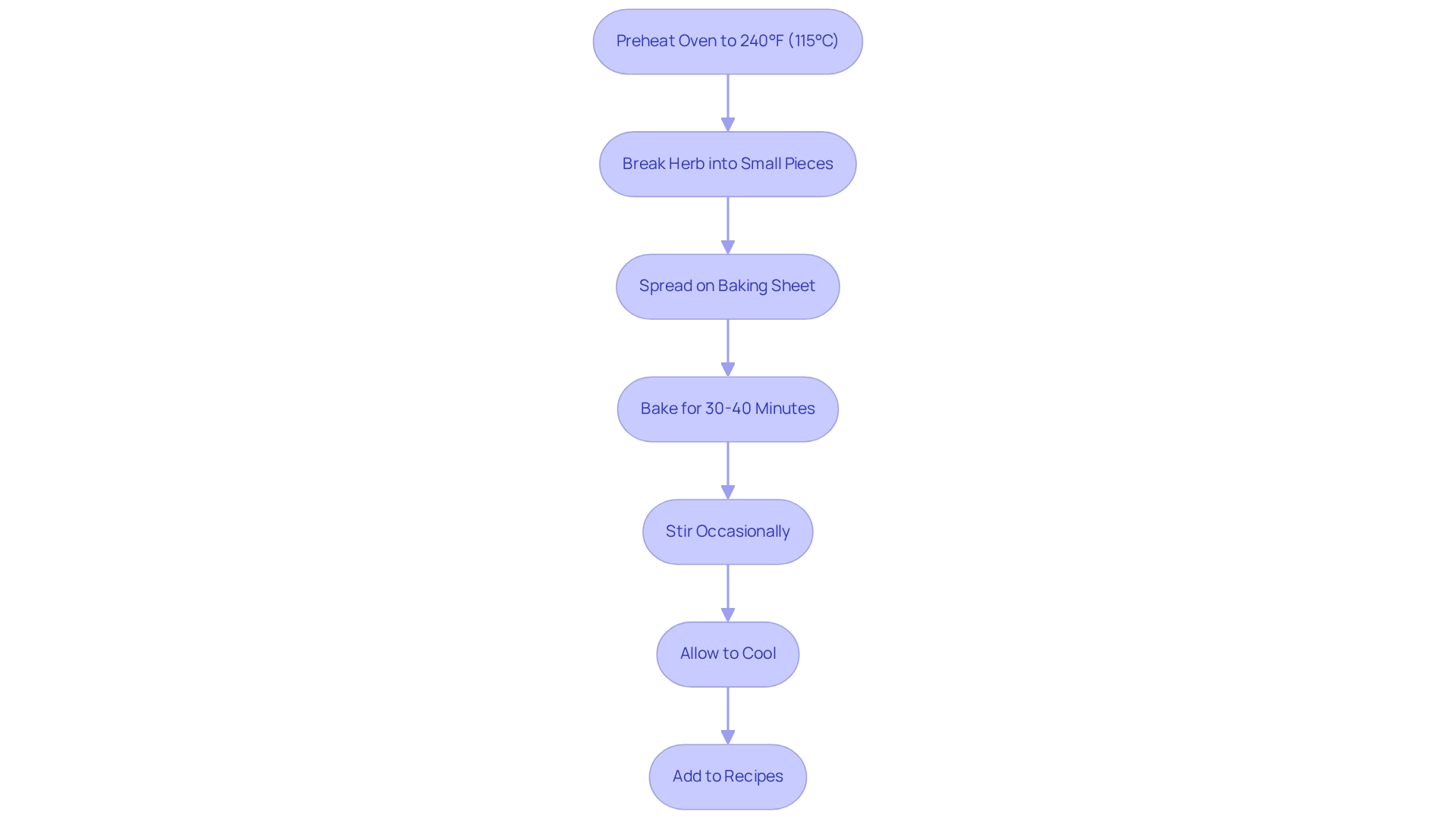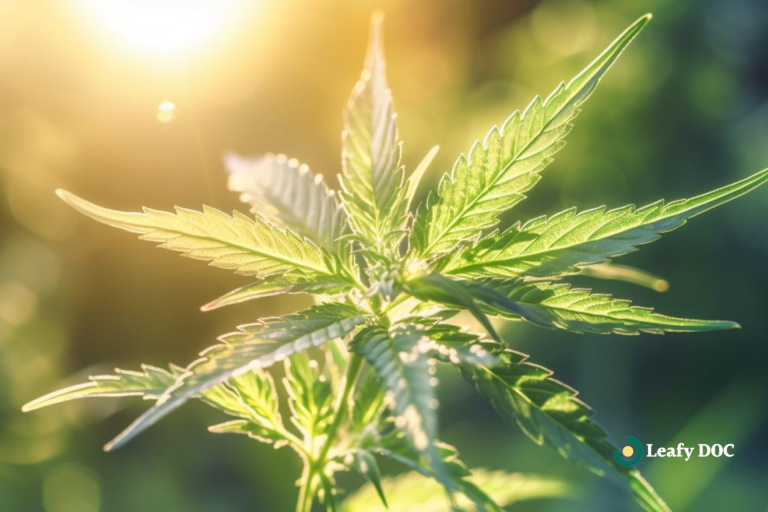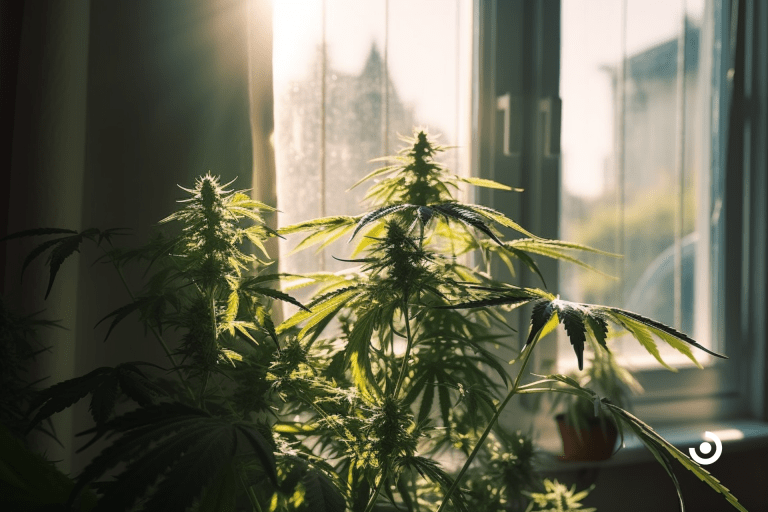How to Cook with Cannabis: Essential Steps for Effective Edibles
by Maya Green · May 9, 2025
Discover essential steps and tips on how to cook with cannabis for effective, delicious edibles.

Overview
Cooking with cannabis can be a rewarding experience, but it’s essential to approach it with care and understanding. Many people may feel overwhelmed by the concepts of dosage, decarboxylation, and the preparation of infused ingredients like cannabutter and canna-oil. It’s important to remember that these steps are crucial for creating a safe and enjoyable culinary experience.
To get started, understanding how to decarboxylate cannabis is key. This process maximizes potency, allowing you to fully appreciate the benefits of your ingredients. You may find that careful dosage calculation is equally important; it ensures that you can enjoy your creations without any worries. By taking the time to learn these essential steps, you are investing in a more fulfilling cooking journey.
As you explore the world of cannabis cooking, remember that you are not alone in this. Many have faced similar challenges and have found success through patience and practice. Embrace the learning process, and don’t hesitate to reach out for support or share your experiences with others. Together, we can cultivate a deeper understanding of this unique culinary art.
Introduction
In recent years, the culinary world has embraced a green revolution, where cannabis is no longer just for recreational use but has emerged as a versatile ingredient in kitchens across the globe. It’s important to remember that cooking with cannabis involves more than just a sprinkle of herb; it requires an understanding of how to effectively infuse food with cannabinoids like THC and CBD, which can offer both flavor and potential health benefits. You may find that creating potent cannabutter and calculating precise dosages for edibles can be both rewarding and empowering.
This guide delves into the essentials of cannabis cooking, ensuring that both novices and seasoned chefs can explore the transformative effects of this remarkable plant. With careful preparation and a dash of creativity, the possibilities are endless. Imagine elevating your dishes while reaping the therapeutic rewards of cannabis. We invite you to embark on this exciting culinary journey, where you can discover new flavors and benefits that resonate with your personal cooking style.
Understand the Basics of Cooking with Cannabis
Learning how to cook with cannabis is an art that allows you to infuse your meals with cannabinoids, particularly THC and CBD, the active compounds in the marijuana plant. These compounds are fat-soluble, which means they bind well with fats like butter or oil, essential for optimal absorption in your body. It’s important to understand the different forms of cannabis—like flower, oils, and concentrates—and their unique effects to ensure your cooking is successful.
Dosage is a crucial aspect of your culinary journey. The effects of edibles can take time to manifest, which may lead to unintentional overconsumption. To ensure a safe and enjoyable experience, it’s wise to start with a low dose and gradually increase it as needed. If you’re managing chronic pain, beginning with a dosage of 5-10 mg of THC is recommended. Monitoring how you feel before increasing the amount can help you discover the benefits of cooking with marijuana while ensuring your safety.
Additionally, understanding how to cook with cannabis, particularly with marijuana-infused honey, is essential, as its potency can vary based on THC or CBD concentration, and this method not only enhances flavors but also offers potential health benefits such as pain relief and relaxation. Medical marijuana has been shown to alleviate chronic pain and can aid in managing inflammatory conditions, making it a valuable ally for those seeking therapeutic effects.
For example, a popular recipe for cannabis-infused butter can be used in a variety of dishes, from delectable brownies to savory sauces, showcasing the versatility of this ingredient. Many renowned chefs have embraced this trend, sharing insights on the transformative effects of adding the herb to their dishes. Chef Chris Sayegh beautifully states that ‘infusing food with the herb can enhance the dining experience while offering therapeutic advantages.’ This perspective further solidifies the plant’s important role in modern culinary practices, and as you embark on this flavorful journey, understanding how to cook with cannabis can be both an enjoyable and beneficial experience.
Explore the possibilities, and don’t hesitate to experiment with different recipes. You may find that this approach not only elevates your meals but also supports your well-being.
Decarboxylate Your Cannabis for Maximum Potency
To effectively decarboxylate the plant, it’s important to begin by preheating your oven to 240°F (115°C). Gently break the herb into small, uniform pieces and spread them evenly on a baking sheet lined with parchment paper. Bake for 30 to 40 minutes, stirring occasionally to promote even heating. This crucial process transforms THCA, the non-psychoactive compound, into THC, which delivers the euphoric effects many seek. After baking, allow the herb to cool before adding it to your recipes.
Decarboxylation is essential for maximizing the potency of cannabis-infused dishes, including honey, which is an important aspect of how to cook with cannabis. This process not only enhances flavor but also ensures that the medicinal properties are fully activated, allowing for a more effective therapeutic experience. Remember, accurate temperature control and timing are key to achieving optimal outcomes. Handling these preparations with respect and diligence truly makes a difference.
By blending honey with decarboxylated marijuana, you create a product that merges the healing properties of cannabinoids with the natural nutrients of honey. This infusion can be utilized in various recipes, from soothing teas to delightful baked goods, providing a smoke-free way to enjoy the health advantages of the plant and demonstrating how to cook with cannabis. You may find it reassuring to know that, as MDBuds notes, “I compiled all the research I did based on lab tests at clubs and from home growers that have test kits,” emphasizing the importance of research in the decarboxylation process. By treating the decarboxylation process with care, you can significantly enhance your understanding of how to cook with cannabis for improved culinary results.
Calculate Your Dosage for Effective Edibles
To accurately calculate your dosage, it’s essential to begin by assessing the THC content of your marijuana. For instance, if you have 1 gram of marijuana with a THC concentration of 20%, it contains 200 mg of THC. When you infuse this into 1 cup of butter, the total batch will also hold 200 mg of THC. If you divide your recipe into 10 servings, each serving will yield 20 mg of THC.
It’s important to remember to start with a low dose, typically between 2.5 to 5 mg, especially if you are new to edibles. This cautious approach is crucial, as many individuals report varying effects from the substance. Some have found relief from chronic pain, anxiety, and insomnia through careful dosing. In fact, many patients have noted the benefits of CBD for insomnia, anxiety, spasticity, and pain, particularly for chronic pain that affects millions of Americans. Understanding how to cook with cannabis and the average THC content in marijuana strains, along with employing effective dosage strategies, can enhance your cooking experience while ensuring safety and efficacy.
You may find that, as Dr. Kiran Kalyankar observes, “Now one may inquire, why is this plant so effective?” The answer lies within us. Our bodies carry the Endocannabinoid system, a biological system full of cannabinoid receptors located in the brain, organs, connective tissue, glands, and immune cells. This highlights the importance of proper dosing.
Furthermore, seeking advice from a healthcare expert is essential, particularly for individuals with specific health issues or those unfamiliar with the substance. This guidance ensures safety in dosing. Remember, Leafy DOC is supported by a network of trusted, board-certified marijuana doctors who can provide tailored guidance to meet your needs.
Create Infused Ingredients: Cannabutter and Canna-Oil
Creating cannabutter is a wonderful way to discover how to cook with cannabis and enjoy its benefits in your cooking. Start by melting 1 cup of unsalted butter with 1 cup of water in a saucepan over low heat. Once melted, gently add approximately 7-10 grams of decarboxylated herb. It’s essential to ensure that the plant material has been heated to activate its THC or CBD content. Allow this mixture to simmer for 2-3 hours, stirring occasionally to ensure an even infusion. After simmering, strain the mixture through a cheesecloth into a container, discarding the remaining plant material. If you prefer, you can follow the same method using your favorite cooking oil to create canna-oil.
Before you dive into your recipes, it’s crucial to consider dosage. Understanding the potency of your cannabis-infused ingredients is essential for safe consumption, especially if you’re new to this experience. Starting with a low dose of around 5 milligrams of THC is a gentle way to gauge your individual tolerance. For instance, if you’re making brownies, remember to divide the total amount of cannabutter used by the number of servings to accurately calculate the THC content per piece. This meticulous approach allows you to appreciate the therapeutic advantages of marijuana, such as pain relief and mood enhancement, while effectively overseeing your experience.
As Oliver Sacks beautifully noted, “I was fascinated that one could have such perceptual changes, and also that they went with a certain feeling of significance, an almost numinous feeling.” This insight underscores the profound effect that marijuana can have on individuals, especially those seeking relief from chronic pain.
When it comes to storage, you can keep your infused butter or oil in the refrigerator for up to two weeks, or even freeze it for longer storage. This not only enhances your culinary creations but also demonstrates how to cook with cannabis to savor the transformative advantages of marijuana in a delightful way. The increasing acceptance of marijuana use reflects a cultural shift, supporting its recognition as a legitimate option for both recreational and medicinal purposes.
Are you curious about the amazing advantages of medical marijuana? You might find it enlightening to explore how this natural remedy can transform your life with pain relief, anxiety management, and safe dosing practices!
Select and Prepare Recipes for Cannabis Cooking
With your cannabutter or canna-oil ready, you can explore a delightful array of dishes to help you discover how to cook with cannabis, bringing joy to your cooking experience. Begin with classic favorites like brownies or cookies, where the rich flavor of cannabis blends beautifully with sweet ingredients.
If you’re feeling adventurous, consider using canna-oil to elevate salad dressings or drizzle it over roasted vegetables, adding a unique twist to your meals. It’s important to remember to distinctly mark your edibles and keep them stored safely to prevent any unintentional consumption, particularly for those learning how to cook with cannabis; starting with simple dishes can really boost your confidence in the kitchen.
You might find joy in experimenting with infused popcorn or adding canna-oil to pasta dishes. As you gain more experience, you can venture into more complex recipes, such as cannabis-infused risotto or savory herb-infused oils. Additionally, adding cannabis-infused honey to your cooking can enhance both flavor and health benefits. This versatile ingredient can be stirred into teas, used in baked goods, or drizzled over dishes to offer therapeutic effects alongside a delightful taste.
Many expert chefs highlight how to cook with cannabis, emphasizing how adaptable this plant is in cooking and noting that it can enrich both flavor and health benefits. A renowned chef even emphasizes that incorporating marijuana in savory dishes not only adds depth but aligns with current trends that favor natural ingredients over processed options.
This is particularly relevant today, as recent trends show that 55 million Americans use marijuana, reflecting a growing normalization of how to cook with cannabis in culinary practices. Real-world examples abound, with many home cooks successfully creating dishes by incorporating how to cook with cannabis, which have become beloved among friends and family.
For instance, a popular recipe for marijuana-infused pesto has gained traction, demonstrating how simple it can be to integrate marijuana into everyday meals. As the popularity of marijuana cooking continues to rise, understanding how to cook with cannabis is essential, especially considering that statistics indicate 43% of young adults used the substance in 2021, further illustrating the demographic trends in its use.
Whether you’re a novice or an experienced cook, the key is to embrace experimentation and enjoy the process. This way, your marijuana-infused creations can be both delicious and safe. Remember, accurately measuring the THC or CBD content in your cannabis honey recipes is essential for controlled dosing. This allows you to enjoy the benefits of cannabis while managing your intake effectively.
Conclusion
Cooking with cannabis opens up a world of culinary possibilities that beautifully blend flavor with potential health benefits. It’s important to understand the basics of infusing food with cannabinoids like THC and CBD, as this knowledge is essential for a rewarding experience. With proper techniques such as decarboxylation and careful dosage calculations, you can create delicious edibles that provide therapeutic effects, making cannabis a valuable addition to your kitchen.
Creating infused ingredients like cannabutter and canna-oil not only enhances the flavor of your dishes but also allows for a personalized approach to dosing. By starting with low doses and gradually increasing, you can enjoy the benefits of cannabis safely and effectively. The versatility of cannabis in both sweet and savory recipes means there’s something for everyone, whether it’s a classic brownie or a gourmet infused salad dressing.
As the acceptance of cannabis in culinary applications grows, so does the opportunity to experiment with new flavors and healthful ingredients. Whether you’re a novice or a seasoned chef, the journey of cooking with cannabis promises to be both exciting and fulfilling. Embracing this green revolution in your kitchen allows for a unique fusion of taste and wellness, paving the way for innovative dishes that resonate with your personal cooking style and preferences. So why not take the plunge? Your culinary adventure awaits!
Frequently Asked Questions
What is the significance of cooking with cannabis?
Cooking with cannabis allows you to infuse meals with cannabinoids, particularly THC and CBD, which are fat-soluble and bind well with fats like butter or oil for optimal absorption in the body.
What forms of cannabis can be used in cooking?
Different forms of cannabis, such as flower, oils, and concentrates, can be used in cooking, each having unique effects.
Why is dosage important when cooking with cannabis?
Dosage is crucial because the effects of edibles can take time to manifest, which may lead to unintentional overconsumption. Starting with a low dose and gradually increasing it can help ensure a safe and enjoyable experience.
What is a recommended starting dosage for THC when managing chronic pain?
It is recommended to start with a dosage of 5-10 mg of THC when managing chronic pain.
How can marijuana-infused honey be beneficial in cooking?
Marijuana-infused honey can enhance flavors and offers potential health benefits, such as pain relief and relaxation, with its potency varying based on THC or CBD concentration.
What are some therapeutic effects of medical marijuana?
Medical marijuana has been shown to alleviate chronic pain and can aid in managing inflammatory conditions.
Can you provide an example of a cannabis-infused recipe?
A popular example is cannabis-infused butter, which can be used in various dishes, including brownies and savory sauces.
What is the process of decarboxylation in cooking with cannabis?
Decarboxylation involves preheating the oven to 240°F (115°C), breaking the herb into small pieces, baking for 30 to 40 minutes, and allowing it to cool, which transforms THCA into THC for psychoactive effects.
Why is decarboxylation important for cannabis-infused dishes?
Decarboxylation maximizes the potency of cannabis-infused dishes and ensures that the medicinal properties are fully activated for a more effective therapeutic experience.
How can infused honey be used in recipes?
Infused honey can be used in various recipes, such as soothing teas and baked goods, providing a smoke-free way to enjoy the health advantages of cannabis.
Last Updated: July 5, 2025
Get Approved for Your Medical Marijuana Card in Minutes!

Get Your Medical Card
Connect with a licensed physician online in minutes

Like This Article?
Share with your friends
Table of Contents
Keep Reading
-
Optimizing Cannabis Retail With Delivery Services
Learn how cannabis retailers can increase sales and expand their customer base with optimized delivery services. Click now to unlock the potential of cannabis delivery services for your business!
-
Finding The Optimal Time To Take Medical Cannabis
Unlock the full potential of medical cannabis with our expert advice. Discover the best time to take it and experience unparalleled relief. Don’t miss out, click now for optimal treatment!
-
Revitalizing Your Skin With CBD For Wellness
Transform your skincare routine with CBD for wellness benefits. Revitalize your skin and experience the amazing CBD skincare benefits today!






